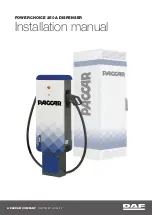
pressures
pressures will
will be
be displayed
displayed after a
after a
few minutes of driving
few minutes of driving
message.
X
Press the
:
button.
The
Use
Use current
current pressures
pressures as
as new
new ref‐
ref‐
erence values
erence values
message is shown in the
multifunction display.
If you wish to confirm the restart:
X
Press the
a
button.
The
Tyre
Tyre press.
press. monitor
monitor restarted
restarted
mes-
sage is shown in the multifunction display.
After you have driven for a few minutes, the
system checks whether the current tyre pres-
sures are within the specified range. The new
tyre pressures are then accepted as refer-
ence values and monitored.
If you wish to cancel the restart:
X
Press the
%
button.
The tyre pressure values stored at the last
restart will continue to be monitored.
Changing a wheel
Flat tyre
You can find information on what to do in the
event of a flat tyre in the "Breakdown assis-
tance" section (
Y
page 337). Information on
driving with MOExtended tyres in the event of a
flat tyre can be found under "Breakdown assis-
tance" (
Y
page 337).
Vehicles with an emergency spare wheel: in
the event of a flat tyre, the emergency spare
wheel is fitted according to the description
under "Fitting a wheel" (
Y
page 362).
Interchanging the wheels
G
WARNING
Interchanging the front and rear wheels may
severely impair the driving characteristics if
the wheels or tyres have different dimensions.
The wheel brakes or suspension components
may also be damaged. There is a risk of acci-
dent.
Interchange front and rear wheels only if the
wheels and tyres are of the same dimensions.
!
On vehicles fitted with a tyre pressure mon-
itor, electronic components are located in the
wheel.
Tyre-fitting tools should not be applied in the
area of the valve, as this could damage the
electronic components.
Only have tyres changed at a qualified spe-
cialist workshop.
Interchanging the front and rear wheels of dif-
fering dimensions can render the general oper-
ating permit invalid.
Observe the instructions and safety notes in the
"Fitting a wheel" section (
Y
page 362).
The wear patterns on the front and rear tyres
differ depending on the operating conditions.
Interchange the wheels before a clear wear pat-
tern has formed on the tyres. Front tyres typi-
cally wear more on the shoulders and the rear
tyres in the centre.
On vehicles that have the same size front and
rear wheels, you can interchange the wheels
every 5,000 to 10,000 km depending on the
degree of tyre wear. Ensure the direction of
rotation is maintained.
Clean the contact surfaces of the wheel and the
brake disc thoroughly every time a wheel is
interchanged. Check the tyre pressure and, if
necessary, restart the tyre pressure loss warn-
ing system (
Y
page 358) or the tyre pressure
monitor (
Y
page 360).
Direction of rotation
Tyres with a specified direction of rotation have
additional benefits, e.g. if there is a risk of aqua-
planing. These advantages can only be gained if
the tyres are fitted corresponding to the direc-
tion of rotation.
An arrow on the sidewall of the tyre indicates its
correct direction of rotation.
Storing wheels
Store wheels in a cool, dry and preferably dark
place if they are not being used. Protect the
tyres against oil, grease, petrol and diesel.
Changing a wheel
361
Wheels
and
tyres
Z
















































